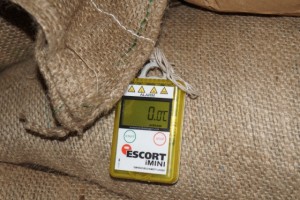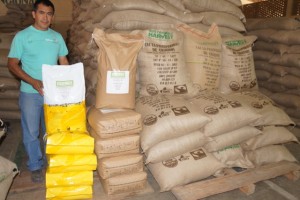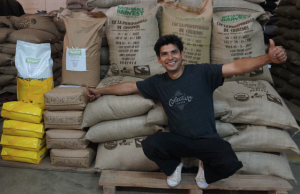Sustainable Harvest® has long been interested in discovering how variables involved in the shipping of green coffee affect coffee quality. Last year we conducted an initial experiment on the impact of transporting and warehousing coffee on flavor, and for 2015 we are jumping further into packaging for a new experiment. Our goal is to employ the roasting community to help us evaluate how different packaging options impact flavor over time.
 Transit from origin to port typically takes 30 to 45 days—a short enough time period that the choice of packaging doesn’t often impact coffee quality. However, we know that many roasters we work with want to keep their coffee for longer periods of time in their warehouses, and various packaging options can yield different quality results when it comes to storing green coffee.
Transit from origin to port typically takes 30 to 45 days—a short enough time period that the choice of packaging doesn’t often impact coffee quality. However, we know that many roasters we work with want to keep their coffee for longer periods of time in their warehouses, and various packaging options can yield different quality results when it comes to storing green coffee.
While we knew that experimenting with different bags would yield compelling results, we decided that the experiment would be most interesting if the coffee being experimented with was of superb quality. We identified a fantastic micro-lot from the Chirinos cooperative in Cajamarca, Peru, for the experiment—it’s a blend of 20 winning coffees from a recent internal competition held at the co-op, and our cupping team in Portland scored it 85-plus.
 For the experiment, we placed the coffee in six different bag types:
For the experiment, we placed the coffee in six different bag types:
- Jute bags that you would commonly see at origin
- GrainPro multi-layer hermetic plastic bags with a gas barrier
- Jutex bags that are jute-looking but made of plastic
- Paper bags with plastic lining
- Innovation bags, 20kg heavy-duty bags invented by Brazilian exporter Bourbon Specialty Coffee
- Ecotact multi-layered hermetic bags
The coffee recently landed in Norfolk, Va., and has been transported to the warehouse for storage. Our plan is to pull samples from each type of bag once every three months for the next year—always from a different bag to ensure we’re getting a true representation of the bag’s storage ability.
 We have assembled a team of cuppers culled from some of the country’s leading roasting companies that will assist Sustainable Harvest®’s U.S.- and origin-based cupping teams in evaluating each three-month sample. After a year has passed, we’re confident that we will have accumulated telling data about how the various bag types impact green coffee quality.
We have assembled a team of cuppers culled from some of the country’s leading roasting companies that will assist Sustainable Harvest®’s U.S.- and origin-based cupping teams in evaluating each three-month sample. After a year has passed, we’re confident that we will have accumulated telling data about how the various bag types impact green coffee quality.
We’re excited to share with you the results of our experiment, and also to offer the coffee to our customers following the experiment. In the meantime, check out our Current Offerings to see what’s available.



.png)
